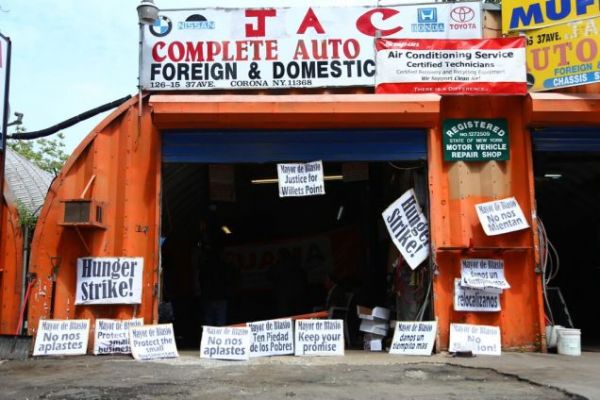
Willet’s Point, often called The Iron Triangle, is a neighborhood in Queens, New York, filled with corrugated metal quonset huts and automotive junkyards. Between Citi Field, home of the New York Mets, and Arthur Ashe Stadium, mechanics and car parts dealers had made their living in Willet’s Point since the 1930s. The city stopped providing services, such as sewers and road repair, decades ago. The blighted neighborhood covers extremely valuable real estate, and the city has tried to move the mechanics out several times. Over the last few years, plans were made and deals struck to move the entire neighborhood to the Bronx, demolish the existing structures, and build high-rise residences and shopping and entertainment complexes in their stead.
Under an agreement with the administration, the city’s Economic Development Corporation would actually give the mechanics $4.8 million to facilitate moving the entire Willets Point community to the South Bronx. The would-be developer of the site, the Queens Development Group, was going to kick in another big chunk of cash, almost a million dollars, to help out as well. The money wouldn’t just pay for the move, it would pay for a legal team at the Urban Justice Center to make sure everything would run smoothly.It was a low-level bureaucratic snafu, of course, that stopped all progress. One that would go months without correction, and leave the mechanics in place past their June first move-out deadline. The weak point of the intricate plan ended up dropping the heaviest load on those with the least power to fix it, hence the hunger strike, which at least generated publicity. Read the entire story, including a vivid description of the ugly yet historic Willet’s Point area, at Jalopnik.
And it wasn’t just the money that would be helping the workers of Willets Point. Free English classes and GED classes were offered, along with job training and placement for people who wanted new careers, and referrals to immigration services for those trying to obtain legal status.
Six-hundred and thirty workers eventually signed up for the program, and it was considered, by most (though most certainly not all) accounts, a success.
Not only was the future going to come to Willets Point, but it had already made almost everyone happy before it even got there.
So why were the proprietors and employees of 48 different auto shops now going on their fifth day with nothing but water and occasional mug of herbal tea?

No comments:
Post a Comment